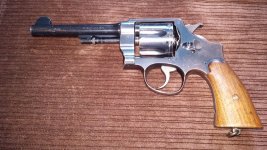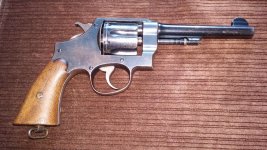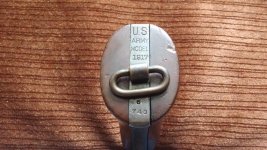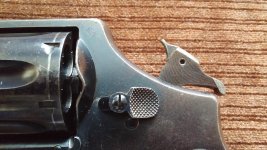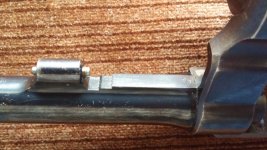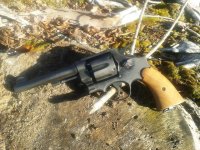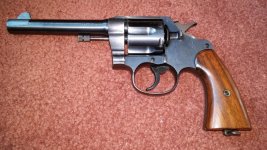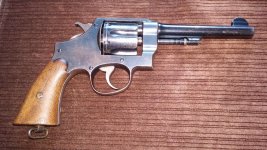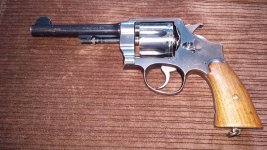There are 4 pretty distinct variations:
-early variation with grooved hammer, dished stocks, and "GSH" acceptance mark
-the typical 1917 without the grooved hammer, with plain stocks, and marked with a "flaming bomb" acceptance
-the Brazilian navy contracts, as referenced above
-the commercial variations that were produced on "left over" military frames
It all depends on the condition of the revolver, but:
-typically the Brazilian marked revolvers are less expensive, but very hard to find in better than "shooter grade" condition, easy to identify because they have the "crest" on the side plate.
-lots of nice "typical 1917" examples out there and one can almost always find a few on sale at any given time on the auction sites, priced somewhat according to condition but mostly according to moon phase or some other cosmic, unfathomable method....patience is required if you're looking for a reasonably priced example in very good to excellent condition
-the earliest SN guns with grooved hammer, etc. show up about one in ten or so guns for sale, again much patience is required. It took me a couple of years to find my most recent early model (SN 704x, 95% condition, I paid $855 for it a couple weeks back in an auction, and I'm still pinching myself to see if I dreamed it). These will mostly sell for a $200 to maybe $400 premium over the flaming bomb marked guns.
-there are fewer commercials out there and they are priced accordingly. I haven't been able to find the right one yet, and it's hard to say a price range, since I've only seen a few sold in the past year or so.
Many of the US marked guns were arsenal refinished, but they are easy to spot since they were "parkerized". Lots of 1917's have also been commercially re-finished and the typical polishing evidence will show up.
Lots have mis-matched stocks. Check the bottom corners for fit, and the SN marked in the right stock (pencil) will indicate if original to the gun.
When you inspect the gun before firing, check timing and cylinder play as indicated in comments above.
There really isn't much to "fake" about these. There were lots of them made, there were lots of surplus guns sold off and the relatively scarce early version is still pretty common. Smart 1917 buying, in my opinion, is a matter of examining for originality, an inspection period/right to return if you can't examine it in person before paying, and exercising patience so you don't over-pay by several hundred dollars. It pays to sit and watch the market for a while to get some idea of condition vs. selling price. Beware the seller who exhibits more enthusiasm than knowledge and tries to sell you a re-finished Brazilian at a commercial gun price.
Good luck!



